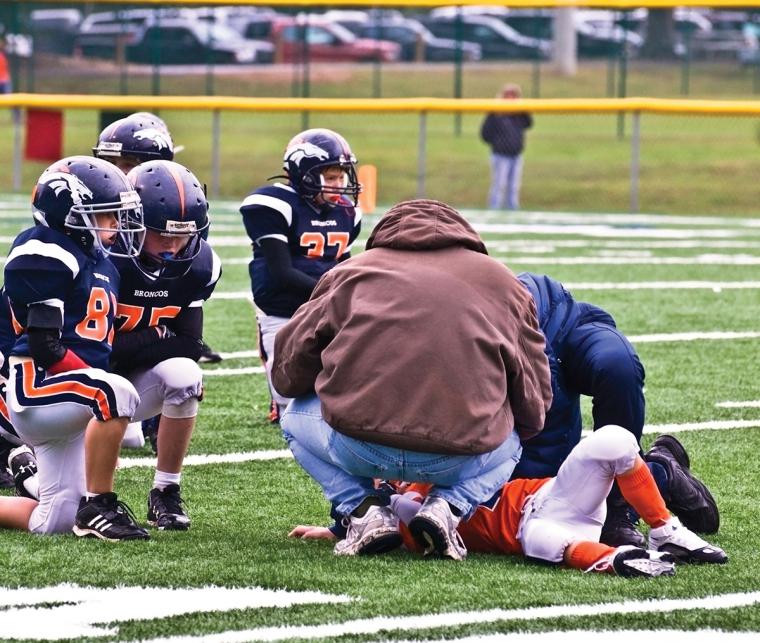

From general liability to business interruption and events cancellation, and even down to insuring player salaries, COVID-19 has thrown uncertainty into the insurance world. But despite that uncertainty, the game will eventually go on, as will insurance coverage designed to manage the risks inherent in those competitions.
Typical Policies
At its core, insurance is meant to protect against unavoidable risk — and the same holds true for policies held by sports teams, leagues, facility owners and operators, and many other people involved in the sports world.
In many ways, policies in the sports world operate just like they do in the rest of the business world. If a guest slips and falls at a game, the general liability policy kicks in. If a staff member catches COVID-19, the health insurance policy, and potentially workers compensation policy, covers the illness.
But in many other ways, sports policies have some nuance.
Before discussing how the policies are different, it is worth looking at how they are similar. Much like any other general liability policy, there are coverage limits that are stated in two numbers – the per-incident and aggregate coverage limits. So, say a policy has a $1 million/$5 million policy limit, that would mean that each occurrence was covered up to a $1 million dollar limit, but they would have five cracks at the policy with five different incidents before bumping into the limit.
“Clients get to choose where they need to be and what liability level they need to be,” said Mark DiPerno, president of SportsInsurance.com. “Each policy is different, and we can really cater and tailor every policy to the specific needs of each client.”
And much like most every other policy worldwide, when sports teams and leagues renew their several insurance lines this go round, there is almost certainly going to be new language included that will exclude any number of exposures that seemed esoteric even just last year.
Regarding Players
Another way sports coverage differs from general business policies is how the players are handled.
Because players are covered under collective bargaining agreements, most leagues purchase a single blanket policy that covers all players within the league, rather than relying on each team handling the insurance. What that means in practice is that the players won’t lose coverage if they are traded.
League officials and team employees are handled differently, with each parent organization handling their health insurance.
All that said, any health insurance policy written since the implementation of the Affordable Care Act would cover someone who catches COVID-19. And if an employee was able to draw a direct line between catching COVID-19 and working, their worker’s compensation policy might also kick in to cover some of the costs.
There is a unique insurance policy that some teams take out on their players, and that is to cover their salaries in case they become permanently disabled and are unable to continue playing — presuming that policy didn’t include a pandemic or communicable disease exclusion (which many likely will begin carrying moving forward.)
Covering these salaries is especially a problem in leagues such as the NBA and NHL where player salaries are guaranteed.
The policy the team purchases would reimburse the team for the multimillion-dollar salary. But since they have extraordinarily high deductibles and premiums, these policies only make sense for the highest-paid players with guaranteed salaries. So, if a linebacker playing in the NFL on a rookie contract becomes permanently disabled by COVID-19, he could subsequently just be cut, meaning the team would be under no obligation to pay out the contract, and so such an expensive policy wouldn’t make much sense.
If the entire season got canceled due to a pandemic, each league’s collective bargaining agreement and the associated language in each player’s contract would determine how payment would work moving forward, whether it would be pro-rated, or a stipend, or some other arrangement.
Business Interruption
A typical addition included on most property insurance policies is business interruption insurance. Unfortunately, despite the promising sounding name, there are a number of reasons why teams and leagues won’t likely see much reimbursement from these policies.
The first is that because they are built as an add-on to the property insurance, most require that there be some physical damage to the property before they kick in. So, say a hurricane damages a stadium, the business interruption policy would pay for the team to relocate to another stadium.
Viruses don’t damage stadiums, so this provision would be tough to claim. But even if you could argue that the virus is damaging the breathable air, most of these policies have pandemic or communicable disease exclusions.
But even if those policies were to kick in and reimburse the teams, they are not designed for the losses most teams and leagues are suffering right now.
A typical business interruption policy would be written assuming you could relocate and continue operations while your home stadium was being repaired. Relocating means you can still collect some ticket sales and (if applicable) TV contracts, so the policies were never written to cover the league’s entire revenue stream. Those policies would reimburse hundreds of thousands, and potentially even millions, but not the hundreds of millions or billions in losses leagues are now facing.
That said, if an organizer purchased an event cancellation or contingency policy for a specific event — say the Olympics — that would likely pay out to reimburse them, presuming they purchased a communicable disease rider for the policy.
And believe it or not, there are still contingency and event cancellation policies being written today.
“The market is still alive,” DiPerno said. “But the underwriters are going to be more selective. Limits are going to be harder to get. You will have to prove losses more than before.”
Policyholders are going to have to offer much more documentation to prove losses than they might have before, and the insurers are going to require much more intense risk management plans before they commit to a policy.
Into the Future
With new limits and exclusions being written in, it would be tempting for leagues to try to self-insure to help reduce their costs, but DiPerno said when it comes to the dollar amounts involved in sports, that just isn’t a reasonable option.
“With a health insurance policy, you might get someone who gets sick and be on the hook for a couple hundred grand. But we are talking straight-out millions in potential losses,” DiPerno said. “In the grand scheme, premiums still aren’t that expensive to make self-insuring worthwhile.”
But one thing is nearly certain — changes are coming on nearly every insurance line in the short run.
You only have to look as far as the head trauma issues dealt with in the NFL several years ago. Once those lawsuits settled, exclusions for head injury popped up in insurance policies across the sports world — not just in football, but also hockey and basketball.
That happened because concussions are a risky thing to cover since it is difficult to determine when and how the injury is ultimately going to impact the victim. So, with the uncertainty, policies began adding exclusions.
That is likely the fate of sports insurance post pandemic. Obviously business interruption policies will have ironclad language excluding pandemics, but it wouldn’t be surprising to also see exclusions in other lines, too.
Still, insurance companies will continue to be a necessary part of doing business post pandemic, and so the sporting world is going to have to watch and wait to see what new limits and exclusions are written into the new policies and try to figure out what that means moving forward. SDM

